Preserving the History of West Virginia Flour Sacks
Posted by Jane Metters LaBarbara.September 6th, 2016
Blog post by Jane Metters LaBarbara, Assistant Curator for Archives and Manuscripts, and Anna Schein, Associate Curator for Printed Ephemera, WVRHC.
During colonial times, agricultural products were stored and transported in heavy wooden barrels or boxes. By the mid-1850s, cotton bags became the preferred method of transporting flour, sugar, seed, animal feed, and fertilizer. Especially in rural communities, these bags, commonly known as feed sacks, were reused to make clothing, curtains, sheets, towels, quilts and more. (To see a fantastic example of a feed sack dress, take a look at this dress made for the 1959 Cotton Bag Sewing Contest, preserved by the National Museum of American History.) Company logos printed on the bags with water soluble inks could be removed by soaking the bags in a combination of lye, soap, and bleaching agents. By the end of the 1950s, almost all of the products previously packaged in cotton bags were sold in paper or plastic sacks which were cheaper to produce and considered more sanitary.
The S. George Company in Wellsburg, West Virginia printed company logos on paper flour barrel labels and paper flour sacks by using metal and wood engravings. Amazingly, many of these engravings survive today and are preserved in the GramLee Collection, curated at WVU’s College of Creative Arts. Some S. George Company flour sack proofs made for West Virginia mills and businesses are now in the WVRHC’s A&M 3868.
Cropped image of an S. George Company flour sack proof for a Moundsville, WV brand (from A&M 3868)
The S. George Company was incorporated in 1892, when Samuel George (1827-1903) bought his partner’s interests in their paper manufacturing business and made himself the company’s president. The company plant, which was located in Wellsburg, WV, near the Ohio River, manufactured flour barrel labels and all kinds of paper sacks. Interestingly, Mr. George transitioned from a farming background to become a man of business and finance, and in 1900 was elected to serve in the WV State Senate for two terms. George actually began his work in paper manufacture in 1878. Even before the paper business was his alone, he was well-known as one of its proprietors and well-respected as a benefactor and leading citizen of Wellsburg. “There has never been anything projected or undertaken that had a tendency to entrance Wellsburg’s interests that Mr. George was not among the first to take hold, and it has always been the case that when he exerted a helping hand the work was successful.” This glowing praise is from The Wheeling Daily Intelligencer, September 14, 1886 (Special Natural Gas edition), as cited here: http://www.ohiocountylibrary.org/wheeling-history/wellsburgwv-1886/3044.
His son, Samuel George Jr. (1868-1931), managed the paper mill (among other things) beginning in 1890. After his father’s death, he continued on as a director and officer of the S. George Company. Samuel Jr.’s younger brother, Thomas H. George (1872-1929), served as treasurer and general manager of the paper company as well.
The company operated both a paper mill and a paper sack factory. The S. George Company records from ca. 1900-1975 (which are held in the West Virginia & Regional History Center as A&M 2799) include a 1936 price list for several types and sizes of paper sacks produced by the company.
S. George Company Price List, February 20, 1936 (from A&M 2799)
Map from the above Price List (from A&M 2799)
As you can see from the map above, this West Virginia company served a very large area of the US with paper sack products. Work for one of their Michigan customers is represented below. We have 5 other flour sacks printed for the Voigt Milling Co. in Grand Rapids in A&M 4206, the S. George Company Flour Sack Collection.
Paper flour sack for Voigt Milling Company of Grand Rapids, Michigan (from A&M 4206)
The S. George Company name is stamped at the top right corner of the sack.
S. George Company employees with paper sack products, 1970 (from A&M 2799). (Katherine) Jane Watson is the woman in the center of the photograph.
Additional Sources of Information about the Georges:
Kirk, John W. Progressive West Virginians. Wheeling, W. Va.: Wheeling Intelligencer, 1923, pp. 187 and 473.
Men of West Virginia. Chicago: Biographical Pub. Co., 1903, pp. 505-507 (v. 2). Also available on http://www.us-data.org/wv/brooke/bios/george_samuel_1827-1903.txt






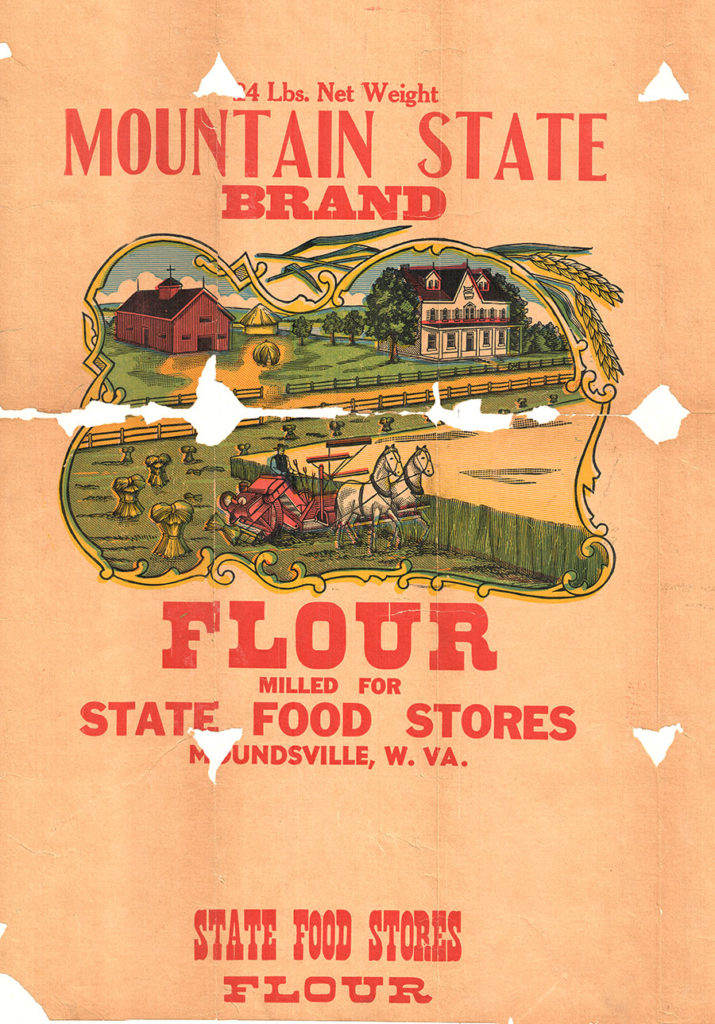
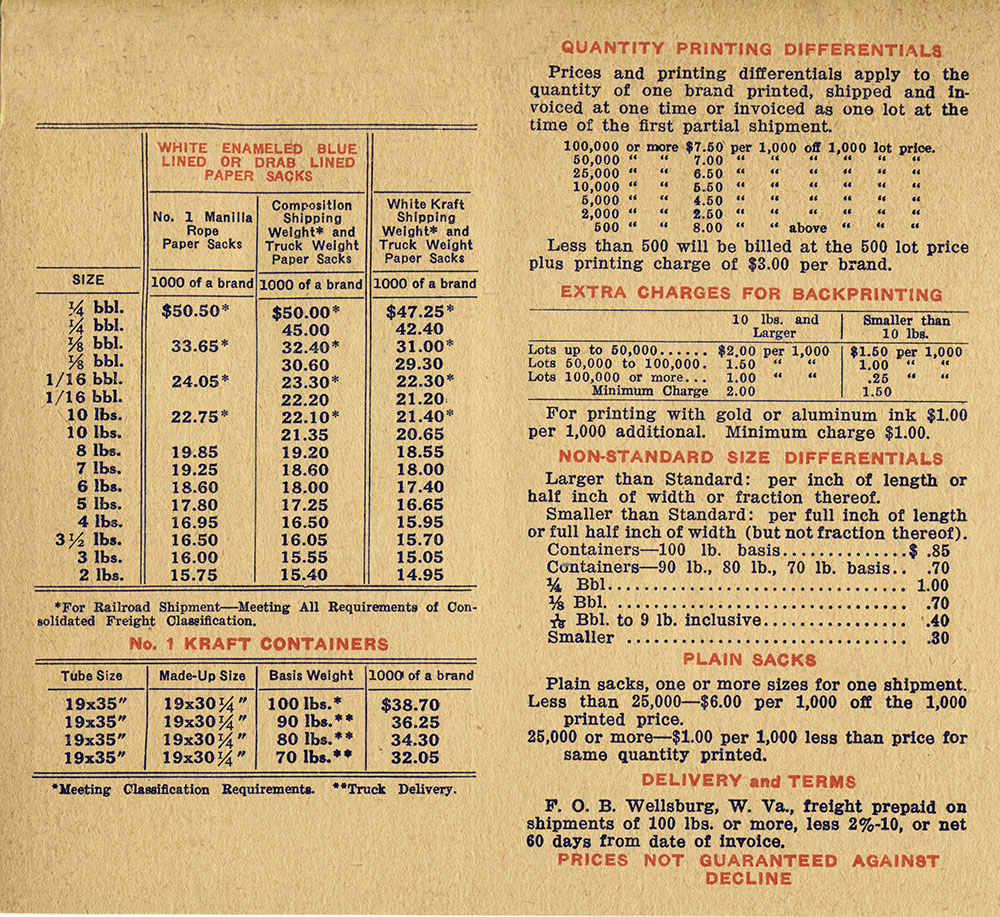
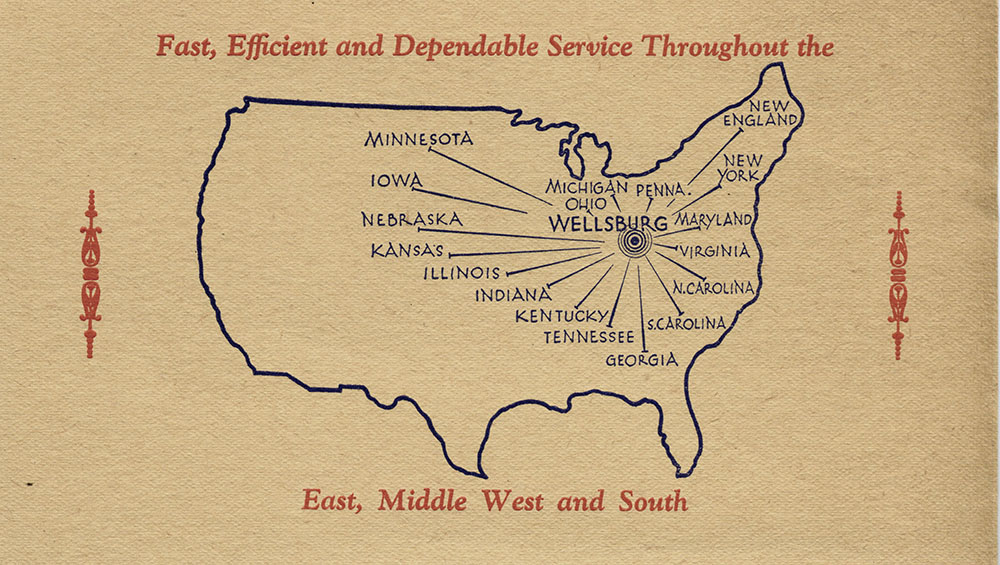
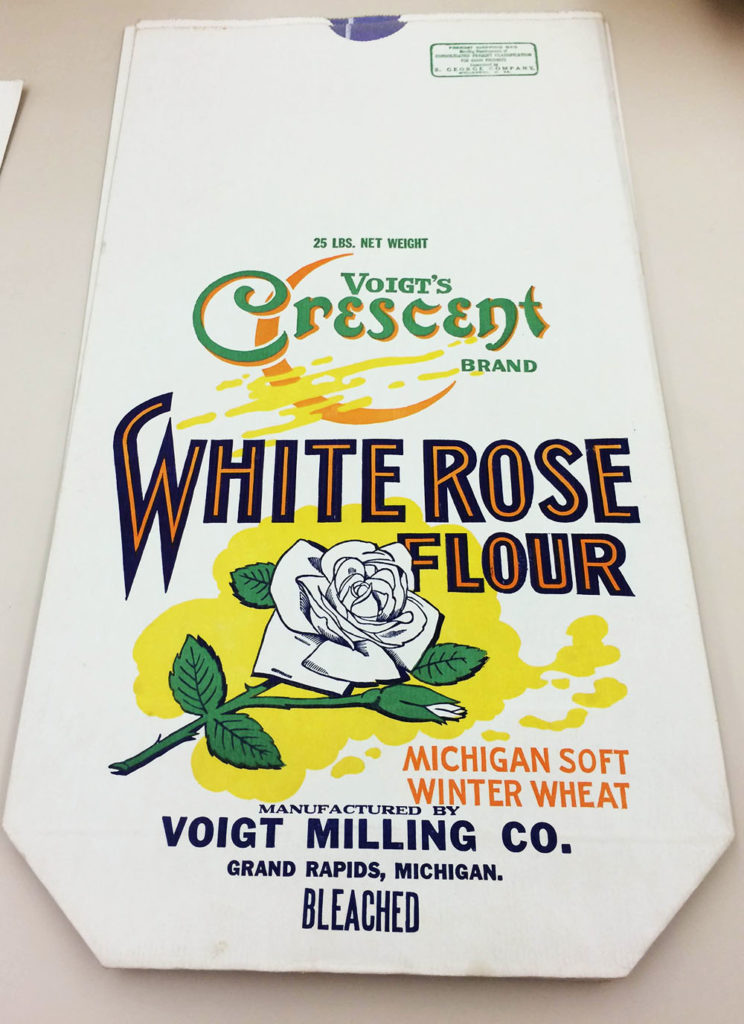
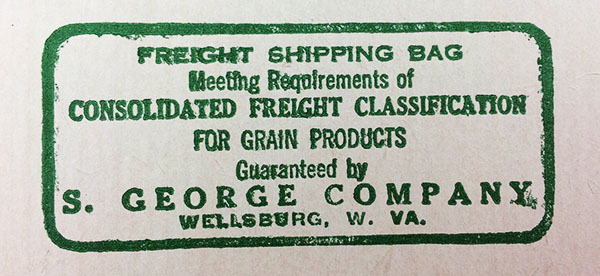
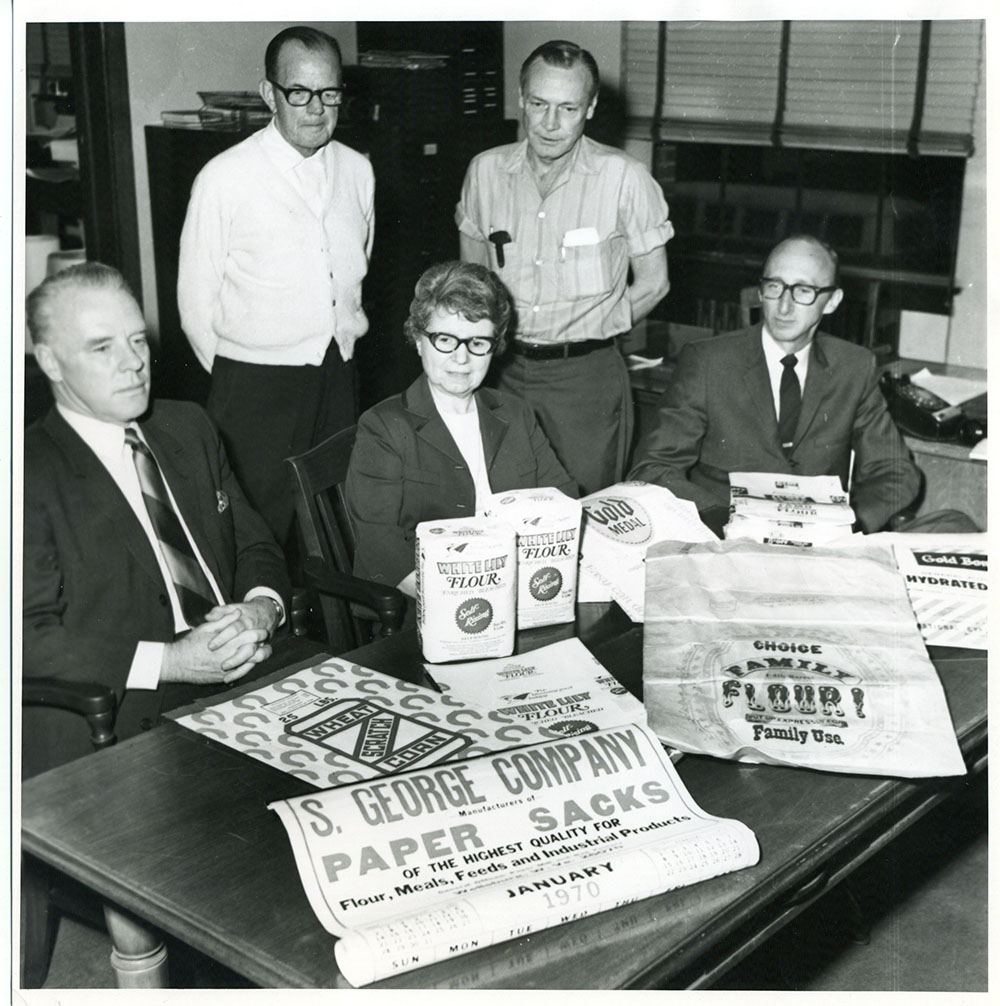
June 2nd, 2018 at 5:46 pm
My wife and I own 9 wood block prints printed by Cill Harvey, a WVU professor, who printed from the wood blocks know as the Gram Lee Collection. Mr Harvey wanted to store the permutation press in my wife’s garage when he finished the project. My wife Jane purchased some prints on her limited budget . Cliff wrote and printed a book about the prints and the process the S. George Company used with the permutation press. We are wanting to find a copy of that book. Can you help us?
June 12th, 2018 at 2:16 pm
Robert, I’m sorry for the slow response; we have two Permutation Press books by Cliff Harvey that I see in our online catalog. I will pass your question on to two of my colleagues to see if they have advice on tracking down another copy.
October 8th, 2018 at 12:44 pm
I am also interested in a copy and have registered my request on AbeBooks. The only copies I see available are in libraries, for in-library usage only. My aunt worked for the S. George Company in Wellsburg, WV,and left me some of the flour sack woodblock prints, so I was trying to find out more about their origins.
October 8th, 2018 at 2:45 pm
I, too, am looking for a copy of Mr. Harvey’s book. The only books I have found are for library use only, the closest being at Kent State. My aunt worked for the S. George Company in Wellsburg, and is the lady in the bottom photograph on this page. She left me a few of the woodblock prints, and I would like to find out more about them.
October 25th, 2018 at 1:19 pm
Ms. Gilmore, I’ve asked my colleagues to look into this and we will get back to you soon!
December 2nd, 2020 at 9:23 am
Through the help of the WVU Library we were able to locate a source for a copy of the book, written by Cliff Harvey, regarding the S. George Company wood block prints. It is truly informational and a very important work of art in and of itself. We were thrilled to add the book to our collection of prints. We are also pleased that the WVU Library understands the importance the book plays in the history of print advertising in West Virginia.